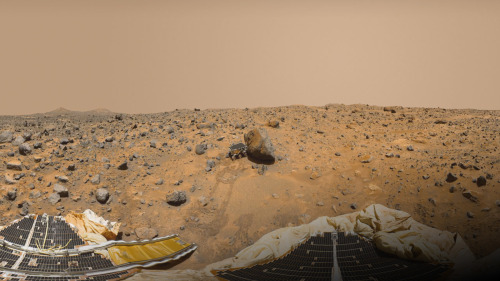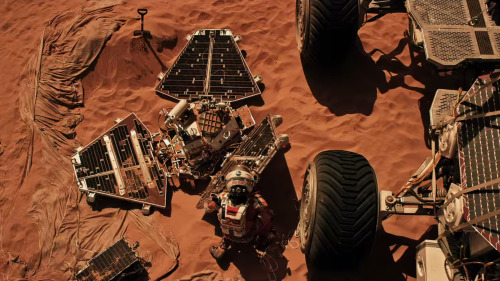How Learning A New Language Changes Your Brain And Your Perception








How Learning A New Language Changes Your Brain And Your Perception
Learning a foreign language opens us up to new experiences, work opportunities, and allows us to meet people we may never have otherwise. More than that, research has shown learning a language can also physically change brain structure and adjust perception.
When we learn a language, we create new neural pathways in our brain, which can lead to noticeable changes. The left hemisphere is generally believed to be the logical part of the brain and is where many of our language skills originate. However, a 2012 Swiss study observed that learning a foreign language later in life is associated with thickening of the cerebral cortex — a layer of neurons specifically responsible for memory, thought, consciousness and, of course, language. This increased thickness can lead to better memory and sharper thinking later in life.
Learning a new language doesn’t just change the physical makeup of the brain. Based on a theory known as linguistic relativity, learning a new language can also change the way we see the world. This is specifically true in relation to our color perception. For example, Japanese speakers have far more words to describe the color blue, and as a result are generally able to see more shades of blue than English speakers. On the other side of the spectrum, the Himba tribe of Namibia in Southern Africa have only five words to describe all the colors in the world. Researchers have observed that, without a word for the color blue, the Himba struggle to tell it apart from green — an easy feat for English speakers.
Infographic by the team at Sunbelt Staffing
More Posts from Curiositytherover and Others
"Is There A Santa Claus?-A Physicist View" SPY MAGAZINE Jan. 1990
Consider the following:
1) No known species of reindeer can fly. But there are 300,000 species of living organisms yet to be classified, and while most of these are insects and germs, this does not COMPLETELY rule out flying reindeer which only Santa has ever seen.
2) There are 2 billion children (persons under 18) in the world. BUT since Santa doesn’t (appear) to handle the Muslim, Hindu, Jewish and Buddhist children, that reduces the workload to 15% of the total - 378 million according to Population Reference Bureau. At an average (census) rate of 3.5 children per household, that’s 91.8 million homes. One presumes there’s at least one good child in each.
3) Santa has 31 hours of Christmas to work with, thanks to the different time zones and the rotation of the earth, assuming he travels east to west (which seems logical).
This works out to 822.6 visits per second. This is to say that for each Christian household with good children, Santa has 1/1000th of a second to park, hop out of the sleigh, jump down the chimney, fill the stockings, distribute the remaining presents under the tree, eat whatever snacks have been left, get back up the chimney, get back into the sleigh and move on to the next house.
Assuming that each of these 91.8 million stops are evenly distributed around the earth (which, of course, we know to be false but for the purposes of our calculations we will accept), we are now talking about .78 miles per household, a total trip of 75-½ million miles, not counting stops to do what most of us must do at least once every 31 hours, plus feeding and etc.
This means that Santa’s sleigh is moving at 650 miles per second, 3,000 times the speed of sound. For purposes of comparison, the fastest man- made vehicle on earth, the Ulysses space probe, moves at a poky 27.4 miles per second - a conventional reindeer can run, tops, 15 miles per hour.
4) The payload on the sleigh adds another interesting element. Assuming that each child gets nothing more than a medium-sized lego set (2 pounds), the sleigh is carrying 321,300 tons, not counting Santa, who is invariably described as overweight.
On land, conventional reindeer can pull no more than 300 pounds. Even granting that ‘flying reindeer’ (see point #1) could pull TEN TIMES the normal amount, we cannot do the job with eight, or even nine.
We need 214,200 reindeer. This increases the payload - not even counting the weight of the sleigh - to 353,430 tons. Again, for comparison - this is four times the weight of the Queen Elizabeth.
5) 353,000 tons traveling at 650 miles per second creates enormous air resistance - this will heat the reindeer up in the same fashion as spacecraft re-entering the earth’s atmosphere. The lead pair of reindeer will absorb 14.3 QUINTILLION joules of energy. Per second. Each.
In short, they will burst into flame almost instantaneously, exposing the reindeer behind them, and create deafening sonic booms in their wake. The entire reindeer team will be vaporized within 4.26 thousandths of a second.
Santa, meanwhile, will be subjected to centrifugal forces 17,500.06 times greater than gravity. A 250-pound Santa (which seems ludicrously slim) would be pinned to the back of his sleigh by 4,315,015 pounds of force.> In conclusion - If Santa ever DID deliver presents on Christmas Eve, he’s dead now.
(NOTE: This appeared in the SPY Magazine (January, 1990) )






Almost a month ago, the spaceflight company Blue Origin sent a rocket up to the edge of space and then guided it gracefully back down to earth, intact. It was a historic first.
But Blue Origin’s major competitor, SpaceX, was quick to point out that the rocket wasn’t going fast enough (or sideways enough) to place a satellite into orbit - just 4,600 kph (~2,860 mph). It went straight up, and then straight down.
Now, SpaceX has managed to put 11 satellites in orbit with a “reusable” rocket. Their rocket didn’t just go up and down - it reached a horizontal velocity of 6,000 kph (3,600 mph) before returning to earth. If SpaceX is able to refurbish the rocket and use it in another launch, they’ll have figured out a way to dramatically reduce the cost of spaceflight.
Here’s the full webcast. And here’s the full story.
Video credit: SpaceX

The God Brain: Roundtable Discussion on God and Spirituality for Brain Games
NeuroscienceNews was invited by National Geographic’s Brain Games to participate in a virtual roundtable discussion on the question:
“Is belief in God innate in our brains, as if it were installed by some divine programmer? Or is spirituality a more complex evolving adaptation that has both helped and harmed us as a species?”
Let us know what you think.
Image: Jason Silva sits with Jonathan, a grad student at IDC Herzliya as they test out the virtual reality EEG cap and goggles. Photo Credit: NG Studios/Andy Fram.


Mars Pathfinder & Sojourner Rover (360 View) Explained
Thanks to new technology, we can take a 360-degree tour of the 1997 Pathfinder mission landing site, including Sojourner, the first Mars rover. Check out this interactive YouTube panorama, and then…
…keep scrolling to find out more about each point of interest, how the Pathfinder mission compares to “The Martian” and NASA’s real Journey to Mars.

Yogi
“Yogi” is a meter-size rock about 5 meters northwest of the Mars Pathfinder lander and the second rock visited by the Sojourner Rover’s alpha proton X-ray spectrometer (APXS) instrument. This mosaic shows super resolution techniques applied to help to address questions about the texture of this rock and what it might tell us about how it came to be.

Twin Peaks
The Twin Peaks are modest-size hills to the southwest of the Mars Pathfinder landing site. They were discovered on the first panoramas taken by the IMP camera on the July 4, 1997, and subsequently identified in Viking Orbiter images taken over 20 years ago. They’re about 30-35 meters tall.

Barnacle Bill
“Barnacle Bill” is a small rock immediately west-northwest of the Mars Pathfinder lander and was the first rock visited by the Sojourner Rover’s alpha proton X-ray spectrometer (APXS) instrument. If you have some old-school red-cyan glasses, put them on and see this pic in eye-popping 3-D.

Rock Garden
The Rock Garden is a cluster of large, angular rocks tilted in a downstream direction from ancient floods on Mars. The rocky surface is comprised of materials washed down from the highlands and deposited in this ancient outflow channel.

MOAR INFO
Pathfinder Lander & Sojourner Rover
Mission Facts [PDF]
Science Results
Rock & Soil Types


This vista was stitched together from many images taken in 1997 by Pathfinder.

Pathfinder and Sojourner figure into Mark Watney’s quest for survival on the Red Planet in the book and movie, “The Martian.” See JPL’s role in making “The Martian” a reality: http://go.nasa.gov/1McRrXw and discover nine real NASA technologies depicted in “The Martian”: http://go.nasa.gov/1QiyUiC.

So what about the real-life “Journey to Mars”? NASA is developing the capabilities needed to send humans to Mars in the 2030s. Discover more at http://nasa.gov/journeytomars and don’t forget to visit me when you make it to the Red Planet. Until then, stay curious and I’ll see you online.

Astronomers Have a New Tool in the Search For Habitable Exoplanets
The quest for habitable alien worlds may get a whole lot easier. http://futurism.com/astronomers-have-a-new-tool-in-the-search-for-habitable-exoplanets/

Today in Futurism! - What it will take to get to mars: 8 must have technologies. Read more at: futurism.com/WTtgU - Scientists develop paper that can store energy. Read more at: futurism.com/LUeAe





A Salute to Sistas in Space
(From top to bottom and the order in which they went into space)
Dr. Mae C. Jemison
Stephanie D. Wilson
Joan Higginbotham
Dr. Yvonne Cagle
Jeanette J. Epps
Source: 5 Black Female Astronauts You Should Know

Measuring the Life of a Human: What Events Will We Miss?
When compared to the life of the universe, the life of a human only lasts the span of a single blink. So, what won’t we get to see?
Find out at: http://futurism.com/videos/measuring-life-human-events-will-miss/

Researchers Discover Ultra-thin Diamond Nanothreads That Could Support Space Elevator
Today, in order to get to the Moon, an incredible logistical setup is required. From the training needed for astronauts, to the millions of dollars of equipment necessary for space travel, to the cost of rocket fuel—Space flight isn’t easy (or cheap). But what if one can reach the Moon by simply stepping into a small vehicle attached to a cable and pressing a button that says “Moon.”
If what you’re imagining is an elevator, then you are right.
It’s also an idea that several scientists have been trying to realize since 1895, and we have written a number of articles on the feasibility of this tech in the past. Now, with what researchers from the Pennsylvania State University discovered, we may be taking a step closer to achieving that idea.
When they applied alternating cycles of pressure to isolated, liquid-state benzene molecules, surprisingly, it was found that rings of carbon atoms assembled into neat and orderly chains, essentially forming strong ultra-thin diamond nanothreads.
Read more at: http://futurism.com/links/researchers-discover-ultra-thin-diamond-nanothreads-that-could-support-space-elevator/

China and the US create a ‘space hotline’ to avoid conflicts
-
 sardothiened liked this · 1 year ago
sardothiened liked this · 1 year ago -
 blobsandberries liked this · 1 year ago
blobsandberries liked this · 1 year ago -
 foxyshriek reblogged this · 2 years ago
foxyshriek reblogged this · 2 years ago -
 deepseedvr liked this · 2 years ago
deepseedvr liked this · 2 years ago -
 infernalsodaflop reblogged this · 3 years ago
infernalsodaflop reblogged this · 3 years ago -
 infernalsodaflop liked this · 3 years ago
infernalsodaflop liked this · 3 years ago -
 oxymitch-archive liked this · 3 years ago
oxymitch-archive liked this · 3 years ago -
 silverstatic liked this · 3 years ago
silverstatic liked this · 3 years ago -
 utopiandreamsofyesterday reblogged this · 3 years ago
utopiandreamsofyesterday reblogged this · 3 years ago -
 asperafern reblogged this · 4 years ago
asperafern reblogged this · 4 years ago -
 portugese101 reblogged this · 4 years ago
portugese101 reblogged this · 4 years ago -
 daywalk4r liked this · 4 years ago
daywalk4r liked this · 4 years ago -
 ideasthatwillneverbepublished liked this · 5 years ago
ideasthatwillneverbepublished liked this · 5 years ago -
 psychologyygeek reblogged this · 5 years ago
psychologyygeek reblogged this · 5 years ago -
 psychsparkle liked this · 5 years ago
psychsparkle liked this · 5 years ago -
 mossear07 liked this · 5 years ago
mossear07 liked this · 5 years ago -
 elizabethcloud liked this · 5 years ago
elizabethcloud liked this · 5 years ago -
 frauge-in-prague liked this · 5 years ago
frauge-in-prague liked this · 5 years ago -
 tsuu-sama reblogged this · 5 years ago
tsuu-sama reblogged this · 5 years ago -
 f1nca liked this · 5 years ago
f1nca liked this · 5 years ago -
 parodytoken reblogged this · 6 years ago
parodytoken reblogged this · 6 years ago -
 captaindadbod liked this · 6 years ago
captaindadbod liked this · 6 years ago -
 noisylanguagewasteland reblogged this · 6 years ago
noisylanguagewasteland reblogged this · 6 years ago -
 noisylanguagewasteland liked this · 6 years ago
noisylanguagewasteland liked this · 6 years ago -
 cityboys-modelgirls reblogged this · 6 years ago
cityboys-modelgirls reblogged this · 6 years ago -
 thepsychrolutesmarcidus liked this · 6 years ago
thepsychrolutesmarcidus liked this · 6 years ago -
 dumpling-things reblogged this · 6 years ago
dumpling-things reblogged this · 6 years ago -
 thiag0511 liked this · 6 years ago
thiag0511 liked this · 6 years ago -
 honey-oohhh-hooneyy liked this · 6 years ago
honey-oohhh-hooneyy liked this · 6 years ago -
 yul-studies reblogged this · 6 years ago
yul-studies reblogged this · 6 years ago -
 poisonedpointofview-blog liked this · 6 years ago
poisonedpointofview-blog liked this · 6 years ago -
 navillerasakura reblogged this · 6 years ago
navillerasakura reblogged this · 6 years ago -
 polyglotka reblogged this · 6 years ago
polyglotka reblogged this · 6 years ago -
 kinkoshi0702-blog liked this · 6 years ago
kinkoshi0702-blog liked this · 6 years ago -
 dank-tiddy liked this · 6 years ago
dank-tiddy liked this · 6 years ago -
 florediums liked this · 6 years ago
florediums liked this · 6 years ago